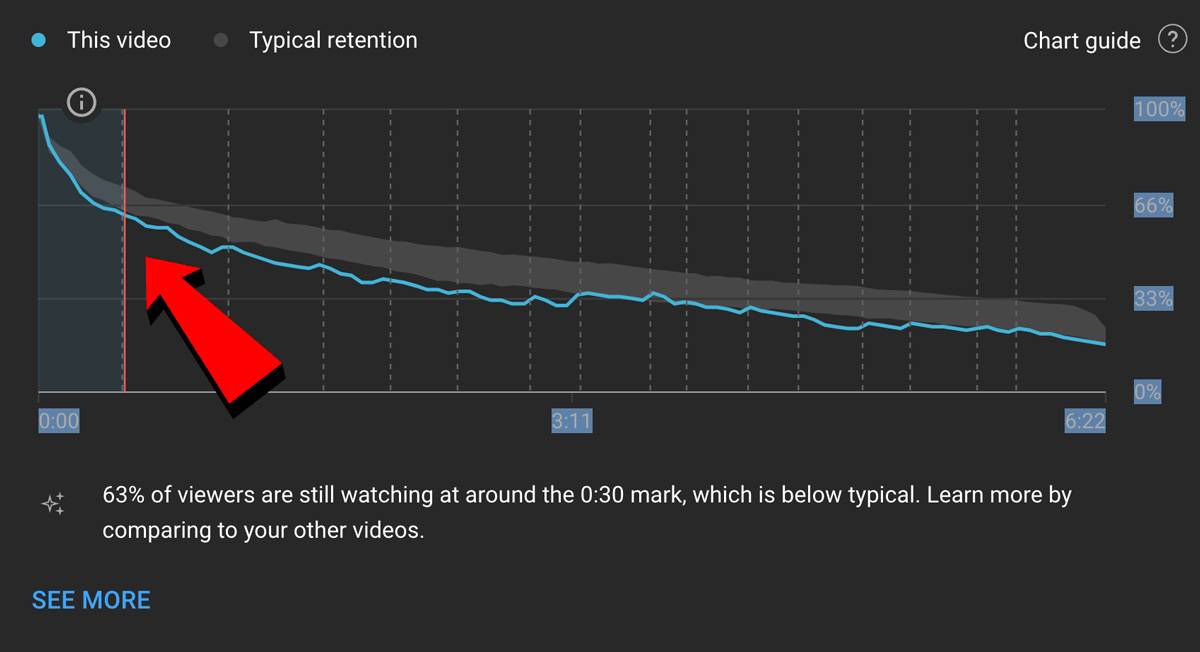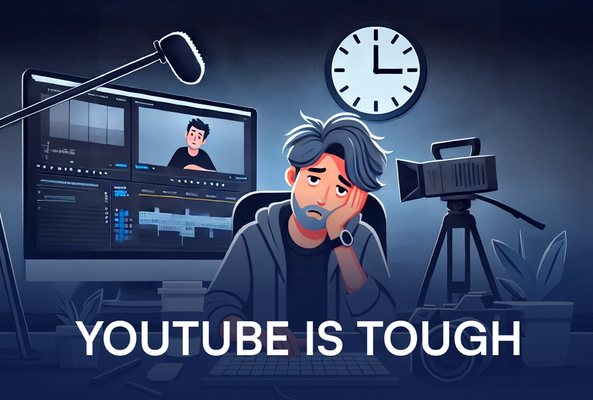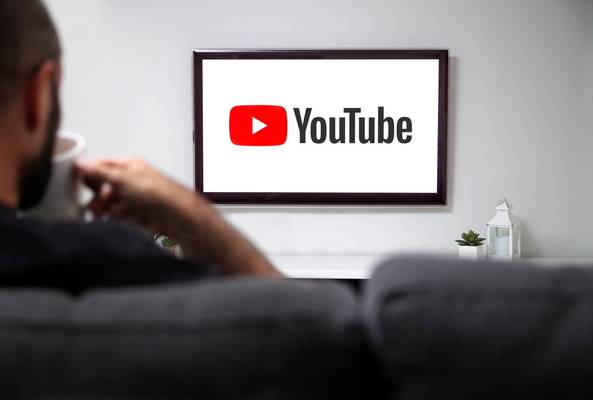Lydia Sweatt is a writer who loves balancing her article/blog time indoors with a healthy dose of nature. She bikes, hikes, and identifies edible plants along the way.
4 Mistakes to Avoid if You Have a Small YouTube Channel
As a small creator, you’ll quickly learn that YouTube is not easy. At this point, you’re probably facing the biggest challenge, which is struggling to get views when no one knows who you are.
But don’t worry: You can beat the odds with a little advice and hard work. The first step is understanding the most common YouTube mistakes. With that information, you can fix costly errors and focus on growing your channel.
Fortunately, Dan Carson, senior executive producer at vidIQ, knows how to grow a small channel. In the video below, he lists the top mistakes holding creators back (and how to fix them).
Stop Guessing. Start Growing.
Join 20M+ creators using vidIQ to get more views, subscribers, and success on YouTube.
But if you want a quick summary of all the tips, keep reading to see what’s stalling your progress.
1. Believing YouTube Owes You Views and Subscribers
Wouldn’t it be great if YouTube rewarded every channel equally? In that case, you could relax while collecting hundreds of views and subscribers, even if your videos don’t engage anyone. You would simply press publish and wait for good things to happen.
That’s not how YouTube works, of course. But many creators wish it could work this way.
So, the first mistake is believing YouTube owes you any form of success. While it’s time-consuming to research, write scripts, shoot videos, and edit a bunch of clips together, Dan says that’s the cost of becoming a successful YouTuber. All of that experience builds you up to make better content!
“Before you can take that footage, put it onto YouTube, and expect a bunch of views and subscribers, you need to first provide value — value to viewers and value to YouTube as a platform,” he says.
2. Ignoring the Power of First Impressions
They say first impressions are everything, and that’s also true for YouTube videos. After all, viewers don't click on the first video they see; they look at many titles and thumbnails before finding something interesting to watch. And there's a lot competition!
For example, what happens when you compare these thumbnails for one second? Which of the two is more appealing, and which one is easier to understand?

Now imagine that each viewer is going through that same process on YouTube. How would you tweak your thumbnails to help them notice your content first?
Read more: 12 Types of YouTube Thumbnails People Love to Click On
“Try to keep them from being too complex,” Dan says. “Use minimal, clear, and readable text. Use bright colors. The foreground should be brighter than the background so everything stands out a lot nicer…. The thumbnail should relate to the content you made and the people who see it.”
Overall, whatever time you spend on titles and thumbnails, Dan recommends doubling it. You may have a small channel now, but you can grow it by “decorating” your videos and attracting more viewers.
3. Not Enhancing the First 30 Seconds of a Video
After the first 30 seconds, many people abandon the video they’re watching in search of a new one. But don’t panic! This is a common and well-known habit on YouTube.
Just look at the retention graph for most YouTube videos. You’ll notice the viewership line falls sharply after 30 seconds and keeps declining.

You can’t stop this 100%, but you can slow it down by getting to the point faster. Think about it this way: You’ve already sold viewers on the value of your content with a compelling title and thumbnail. Now all you need to do is deliver that value.
“Jump right into the topic,” Dan says. “Give them a strong hook, and then maybe ask an intriguing question that encourages them to engage with you in the comments.”
But the other stuff — asking viewers to subscribe, introducing yourself — should come at the end, not the beginning, Dan clarifies. This allows you to give people what they want up-front, which is whatever you promised in the title and thumbnail.
Giving people what they want ASAP typically leads to more watch time. That sends a positive signal to the YouTube algorithm, which means the system could recommend your content to more people. Eventually, that gives you a shot at more YouTube views!
4. Stressing About the Wrong Metrics
From the start, creators are trained to focus on specific metrics if they want to enter the YouTube Partner Program, such as:
- 1,000 subscribers
- 4,000 hours of watch time
- 10 million YouTube Shorts views
But these numbers take time to reach, and this is where smaller creators lose heart. So, try to look at these metric in a new light.
Consider a new channel that has only uploaded a couple of videos. Because YouTube doesn’t know much about the channel or the content, the videos will probably have low impressions on the platform, which might result in fewer views. But if the video has a high click-through rate, it’s capable of generating enough intrigue in the first place — and that is a huge positive for a small creator. So, depending on how you look at it, metrics can inform you differently.
Narrow it down to the things that matter. Make sure your average view duration and audience retention are steadily increasing with each upload. Keep an eye out for returning viewers and the videos that keep bringing them back. Following this data over time will give you actionable areas to work on.
Read More: How to Get Subscriber Feedback from a YouTube Analytics Deep Dive
How to Fix These Small YouTuber Mistakes
If you’ve made a few mistakes on your channel, remember that it’s never too late to turn things around. Embrace the lessons, then chart a new course of action!
Here are five things you can do right now:
- Instead of focusing on views and subscribers, focus on building a community. Find your target audience and cater to their specific interests.
- Don’t prioritize video tags and descriptions before everything else; put your time, energy, and resources into making titles and thumbnails that capture attention.
- Create titles and thumbnails that complement one another instead of copying each other. For example, don’t turn the video title into thumbnail text; choose unique words that add context to the video.
- Shorten your intros to include a quick hook and your video’s main topic.
- Avoid using fancy intro graphics that don’t relate to the video.
To sum it all up in a single word, the differentiating factor that your channel needs is personalization. Maybe the content you want to upload has already been done by larger creators, but that's OK. Tap into your creativity and find a way to stand out or add something new to the conversation.
In one of our recent videos, popular personal finance YouTuber Humphrey Yang describes how he achieved this exact feat despite being a small creator in a competitive niche. Watch his journey below and maybe you'll find inspiration to do the same!
Have you fixed these basic mistakes on your channel? That means you're ready for the next step: using emotional triggers to get more views.
20k+ 5 Star Reviews
Ready to put this into action?
Use vidIQ to find your next video idea, pick better keywords, and optimize every upload.






